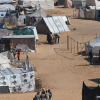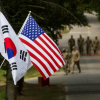At a summit in Italy on Thursday, Group of Seven (G7) leaders agreed to allocate $50 billion to Ukraine using frozen Russian Central Bank assets, marking a significant escalation in the economic conflict against Russia. This decision represents a compromise between the United States and Europe on how to utilize the approximately $280 billion in frozen Russian assets held by the US and its allies.
The $50 billion will be provided to Ukraine by the end of the year as a loan, to be repaid using profits from the frozen Russian assets. The US had initially proposed to transfer all the frozen funds directly to Ukraine, but faced resistance from European leaders, who were reluctant to fully deplete the assets held within the EU.
National Security Advisor Jake Sullivan emphasized the US's dedication to this plan, stating, “We see proceeds from these assets as a valuable source of resources for Ukraine at a moment when Russia continues to brutalize the country, not just through military action on the front but through the attempted destruction of its energy grid and its economic vitality.”
European leaders had initially suggested a separate plan to provide Ukraine with approximately $3 billion annually from the interest generated by the Russian assets. However, Ukraine deemed this insufficient, leading to the compromise $50 billion loan proposed by the US.
The agreement was announced at the G7 summit attended by leaders including Italian Prime Minister Giorgia Meloni, Japanese Prime Minister Fumio Kishida, Canadian Prime Minister Justin Trudeau, US President Joe Biden, European Commission President Ursula von der Leyen, and World Bank President Ajay Banga.
Russia has condemned the plan, viewing it as theft of its sovereign funds and preparing to retaliate. Moscow has warned that using its assets in this manner will complicate future reconciliation with the West, as lifting sanctions would necessitate returning the spent assets to Russia. Additionally, this move could undermine confidence in the Western banking system and accelerate the global shift away from reliance on the US dollar.
4o
















